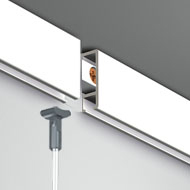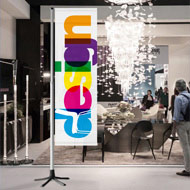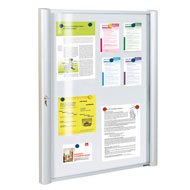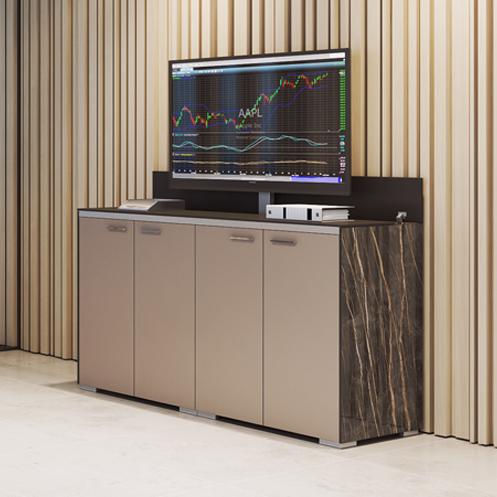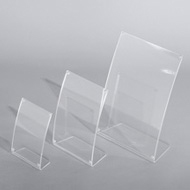"Digitaldruck": Laserdruck, Tintendruck, Sublimationsdruck und Co.
Mittwoch, 1. Mai 2019

Digitaldruck: Begriff und Druckverfahren
Der Begriff Digitaldruck vereinigt in sich verschiedene Druckverfahren, für die es kennzeichnend ist, dass es da keinen festen Druckkörper gibt. Die Druckvorlage existiert nur digital – sie wird mit dem Computer erstellt oder darin hochgeladen und mittels des Druckers direkt auf das zu druckende Material übertragen. Der Digitaldruck gehört zu den Non-Impact-Verfahren (NIP), weil es keinen Kontakt zwischen der Druckvorlage und dem Druckstoff gibt.Der Digitaldruck ermöglicht das Bedrucken der kleinsten Auflagen ab 1 Stück. Es lassen sich die verschiedensten Materialien in diesem Verfahren bedrucken: Papier, Plastik, Stein, Glas, Holz, Metall u.a.
Am häufigsten werden folgende Digitaldruckverfahren verwendet: Laserdruck, Tintenstrahldruck, Thermosublimation, Thermotransfer, 3D-Druck und moderner Fotodruck.
Laserdruck (Elektrofotografie)
Bei dem Laserdruck (auch als Elektrofotografie und tonerbasierter Digitaldruck bekannt) wird das Tonerpulver durch Fotohalbleiter und einen Zwischenträger auf das Papier übertragen. So funktionieren die Laserdrucker auf dem Prinzip der elektrostatischen Kräfte. Mit dem Laserdruck können viele Produkte - von Einladungen und Unterlagen über Hochglanzfotos und Prospekte bis hin zu Schildern bedruckt werden. Sehr häufig wird diese Druckart im Fotobücher-, Etiketten- und Verpackungsdruck eingesetzt. Offenbarer Vorteil dieses Verfahrens: zeit- und kostengünstig, individueller Druck, fotorealistisch, leuchtende satte Farben. Je nachdem, auf welchen Träger und mit welchen Farben gedruckt wird, unterscheidet man zwischen Solventdruck, UV-Direktdruck und Latexdruck.Der Solventdruck ist ein digitales Druckverfahren, das mit lösungsmittelhaltigen Farben arbeitet und zum Großformatdruck gehört. In diesem Verfahren können Klebefolien, Planen, Vinylnetze, Poster, Messewände u.v.m. bedruckt werden. Der Solventdruck zeichnet sich durch sehr UV-beständige und kräftige Farben aus und wird sowohl im Innen, als auch im Außenbereich eingesetzt.
Beim UV-Druck (auch UV-Direktdruck oder Plattendirektdruck genannt) werden die UV-Farben verwendet. Es ist eine neue Dimension im Schilderdruck. Hier erfolgt der Druck direkt auf den Bedruckstoff, oft Acrylglas oder PVC. Das Verfahren kann auch indirekt sein, wenn der Schilddruck auf eine spezielle beklebende Hochleistungsfolie erfolgt, die abschließend auf das Schildmaterial aufgeklebt wird.
Noch ein Verfahren im Großformatdruck ist der Latexdruck. Bei dieser Druckart werden spezielle Latex-Tinten eingesetzt, die keine gefährlichen Stoffe, die die Luft verschmutzen, enthalten. Im Gegensatz zum Solventdruck entspricht der Latexdruck den strengsten ökologischen Normen – ist umweltfreundlich – und passt auch für die Nahrungsmittelwirtschaft. Die Drucke sind wasserbeständig, die Farben bleichen nicht aus und sind auch kratzbeständig. In diesem Verfahren bedruckt man z.B. PVC-Planen, Banner, Aufkleber, Tapeten, Textilien usw.
Tintenstrahldruck (Inkjetdruck)
Beim Tintenstrahldruck (oder Inkjetdruck) werden im Unterschied zum Laserdruck winzige farbige Tintentropfen auf das Papier bzw. Textil gesprüht. Diese Druckart unterteilt sich in Großformatdruck (Large Format Printing) und in den Druck mit hohen Geschwindigkeiten (Highspeed-Inkjet) und wird in der Bücherproduktion, im Interieur-Design sowie im Textildruck verwendet.Darüber hinaus findet Tintenstrahldruck seine Anwendung im Transpromo-, Mailing-, Zeitungs- und Zeitschriftendruck. Für dieses Druckverfahren sprechen hohe Geschwindigkeit und Druckqualität. Im Großformat-Bereich lässt der Inkjetdruck die Bahnen mit Breite von bis zu fünf Metern bedrucken.
Thermotransfer Druck
Als Thermotransfer werden die indirekten Druckverfahren bezeichnet, bei denen der Druck von einem Übertragungsschicht auf den Druckstoff durch eine Hitzebehandlung erfolgt. Hierher gehören Flex-/Flockfolien-Transferdruck und Digitaltransferdruck.Das Druckbild wird im Flex-/Flockfolien-Transferdruck auf eine spezielle einfarbige Transferfolie aufgetragen, ausgeschnitten und entgittert. Dann wird das Bild mit einer Transferpresse gepresst und zugleich gehitzt und dadurch auf das Druckmaterial übertragen. Dieses Verfahren passt für die Motive mit lediglich bis zu 3 Farben in Vektorgrafik: Schriftzüge, Piktogramme und Logos o.ä.
Der Digitaltransferdruck unterscheidet sich vom Flex-/Flocktransferdruck dadurch, dass die Grafik nicht auf die einfarbige, sondern auf die weiße Transferfolie und mit Eco-Solventfarben aufgetragen wird. Auch der mehrfarbige Druck mit Farbverläufen ist umsetzbar. Der weitere Druckprozess ähnelt völlig dem Flex-/Flocktransferdruck.
Sublimationsdruck
Der Sublimationsdruck (oder Thermosublimationsdruck genannt) ist das Druckverfahren, bei dem die Sublimationsfarben aus ihrem festen Zustand auf dem Zwischenträger in den gasförmigen übergehen, ohne flüssig zu werden. Dieser Prozess erfolgt mit einer Transferpresse, die mit hohem Druck und großer Hitze das Druckmotiv auf dem Material fixiert. Die Thermosublimation wird in unterschiedlichsten Bereichen gebraucht: Mode und Bekleidung, Werbegeschenke und -industrie, Tassen und Souvenirs u.a.3D-Druck
Das neuste und rasch entwickelnde Verfahren ist der dreidimensionale Druck, oder 3D-Druck. Die zu druckenden Gegenstände werden zuerst mit dem Computer geschaffen und dann mit einem 3D-Drucker ausgedruckt. Hier werden spezielle Materialien entweder schichtweise aufgebaut oder abgetragen. Heutzutage werden 3D-Drucke mit Pulver, mittels geschmolzenen Materialien und mit flüssigen Materialien eingesetzt. Der 3D-Druck erfolgt hauptsächlich mit zwei Arten der Drucksysteme – Kartesisch und Delta, die von einander durch die Art der Bewegung unterscheiden.Die kartesischen 3D-Drucker bewegen sich von links nach rechts, von vorne nach hinten und von oben nach unten. Sie verfügen i.d.R. über ein bewegliches Druckbett in Quadratform, sind nicht groß und relativ billig. Diese Drucker passen optimal für die Herstellung von breiten Teilen und großformatigen Konstruktionen.
Die Delta 3D-Drucker haben das runde Druckbett und drei Arme, die gewöhnlich aus einem Parallelogramm bestehen. Die Bewegungslinie hängt von Veränderungen der Winkel dieser Parallelogramme ab. Diese Drucker eignen sich ideal für den Bau der hohen Objekte. Im Gegensatz zu den kartesischen 3D-Druckern sind die Delta 3D-Drucker größer, schwieriger und brauchen kompliziertere Berechnungen, funktionieren aber schneller und ohne Geräusch.
Der 3D-Druck wird in verschiedensten Bereichen verwendet: in Medizin (Leibesfrüchte, Biodruck und Prothesen, Arzneien), in Flugwesen, Auto- und Raumfahrtindustrie, in Architektur und Bauwesen, in Ausbildung und Kartographie, in Lebensmittelindustrie, in Mode (Kleidung und Schuh), für Customization, für die Herstellung von Kunstwerken, Souvenirs, Spielfiguren und -zeugen, Hausrobotern und 3D-Druckern, Musikinstrumenten, Möbel, Schmucksachen u.a.













